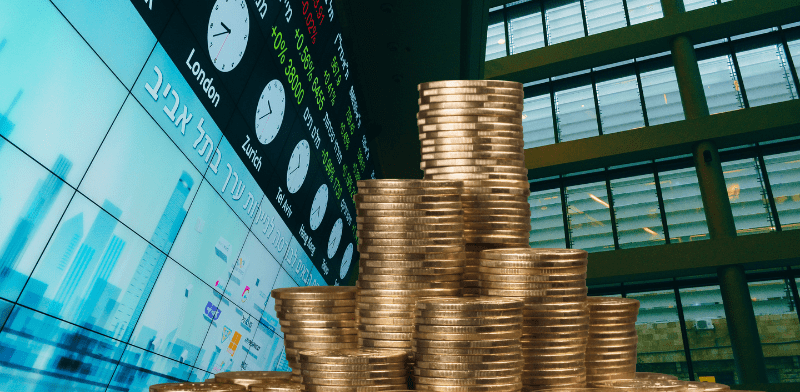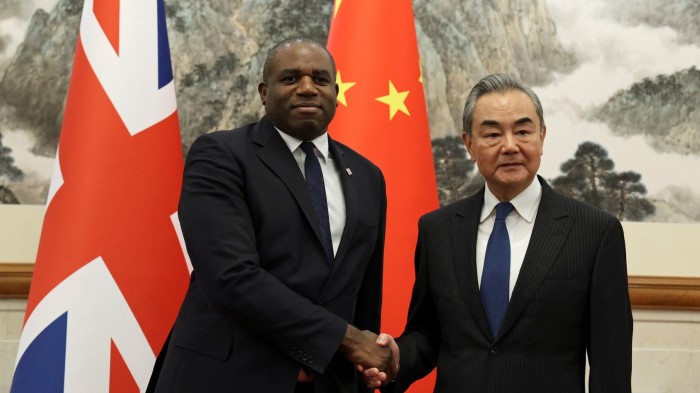After six straight trading days of rises in the Tel Aviv Stock Exchange (TASE) main indices, the market fell yesterday. The sellers were probably profit taking after the past week’s sharp gains.
Even so, a cumulative jump of about 7% in the leading Tel Aviv-125 Index, since the successful surprise attack in Iran on June 13, makes the TASE one of the best performing stock markets in the world since the beginning of the year (after South Korea, Hungary, Poland and Russia), and the best in the West, with a return of 19% in the leading index. For comparison, the Wall Street S&P 500 index has risen by less than 2% since the start of 2025.
Another result of the increases since the start of the Iran operation is the increase in the value of the TASE, with the companies traded there (over 530 in number) adding over NIS 100 billion to their aggregate value since the start of the operation. That value now stands at about NIS 1.4 trillion.
When examining the sectors into which the money flowed, it becomes clear that the Tel Aviv-Banks 5 Index, which includes the shares of the five largest banks (Leumi, Hapoalim, Mizrahi-Tefahot, Discount and First International), has added NIS 31 billion to its value since the start of the operation in Iran – the largest increase in value.
A major reason for this is that foreign investors seeking exposure to Israel usually do so by investing in banks, which are a kind of mirror of the local economy. The banks have also shown particularly strong results in recent years, partly due to the increase in interest rates and inflation.
The Tel Aviv Banks Index has risen by about 12% since the start of the operation in Iran (and by 41% since the beginning of the year), and the combined value of the five largest banks is already approaching NIS 300 billion – over 20% of the value of the entire stock market.
Real estate is also to the fore
After the Banks Index, the increase in value for residential real estate companies stands out, having recorded especially sharp gains since the start of the operation, in some cases by tens of percent. This is against the backdrop of investor assessments that companies in the industry will be required to work to restore the damage of the war and promote urban renewal projects that include adding new housing units.
The Tel Aviv Construction Index has risen by about 20% since the start of the operation in Iran, and its aggregate value has been added to by NIS 14 billion in about a week, an increase that has offset the declines in the index since the beginning of the year.
Another sector that has enjoyed sharp increases is insurance stocks, with the Tel Aviv Insurance Index jumping 18% since the start of the Iran operation, completing a jump of 57% since the start of 2025. The nine insurance companies included in the index (including Phoenix, Harel, Menora Mivtachim, Clal Insurance and Migdal) have added about NIS 12 billion to their aggregate value.
RELATED ARTICLES
The Tel Aviv Oil & Gas Index has gained about 12% since the start of the Iran operation and about 37% since the start of the year, amid the rise in world oil prices in recent days. In the index, the Navitas Petroleum partnership led by Gideon Tadmor, which develops oil reserves in the Gulf of Mexico, has climbed 48% since the start of the year with a market cap of NIS 11.1 billion.
When examining the stocks that have been the most notable gainers in the Tel Aviv-125 index since the start of the Iran operation until Monday afternoon, the Menora-Mivatchim insurance company is in first place, adding about 25% to its value in the past week, and trading at a market cap of about NIS 15 billion.
Following it are representatives of the construction and infrastructure sector – the shares of Shikun & Binui, Ashtrom Group, Inrom and Carasso Real Estate, all with a jump of over 20% during this period.
“Massive entry to the indices”
TASE EVP head of trading, indices and derivatives Yaniv Pagot observes that overall in the past week, quite a few stock indices have recorded exceptional performances. He says, “There are over 10 indices that have risen by more than 10% in this period. Alongside them, those that have risen only slightly are the Tel Aviv Technology Index (2% since the start of the operation in Iran) and the dual stock indexes.”
According to Pagot, the institutional investors, the managers of public savings, have set the tone by pouring demand into the TASE since the start of last week. “Day after day, there was a massive influx of hundreds of millions of shekels into investment instruments that track the Tel Aviv-35, Tel Aviv-90 and Tel Aviv-125 indexes. And we are only beginning to scratch the surface of the potential there.”
In his estimation, “Since the start of the year, about NIS 6 billion has been raised in investment vehicles that track stock indices on the stock exchange (ETFs and imitating funds). We are at a peak in fundraising for these products, which are the way to increase liquidity and exposure to the local stock exchange.”
Pagot further notes that “We came to the current situation with a market share of retail investors (the general public) that is larger than we knew in the past. If we used to talk about 5%-6% of the daily turnover on the stock exchange, today it is probably double that.”
When asked whether the general public, who is used to buying mainly products that track the S&P 500 index, which has become a hit with Israelis in recent years, is now easier to buy products that track the Tel Aviv indices, Pagot answers in the affirmative: “We are touching only the tip of the iceberg. For example, someone who bought a money market fund (which provides a return similar to a bank deposit), now buying a fund that invests in bonds is simple for them. “They have already crossed the Rubicon.”
Psychology of the gains
Pagot, like other experts, says it is also worth paying attention to the strengthening of the shekel against the dollar, which is driving the transfer of money by local investors from Wall Street to Tel Aviv. “There has been an appreciation of about 6% in the shekel against the dollar since the beginning of the year. Most people do not understand the connection between stock returns and exchange rate performance. I estimate that by the end of this year the shekel will be even stronger against the dollar, and this affects Israelis’ investments abroad.”
And yet the strength of the gains on the TASE has surprised many experts tracking it. After all, the missile barrages from Iran have not stopped for a single day. Pagot offers a different perspective: “When you woke up on Sunday morning this week and heard that the reactor in Fordow had been attacked by the US and was possibly destroyed, did you feel that your situation as a country or as a people had improved or gotten worse? Most people would say, in my opinion that their situation had improved. “And if it has improved, that should be reflected in asset prices,” Pagot concludes.
Published by Globes, Israel business news – en.globes.co.il – on June 24, 2025.
© Copyright of Globes Publisher Itonut (1983) Ltd., 2025.







